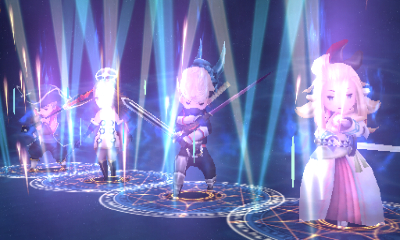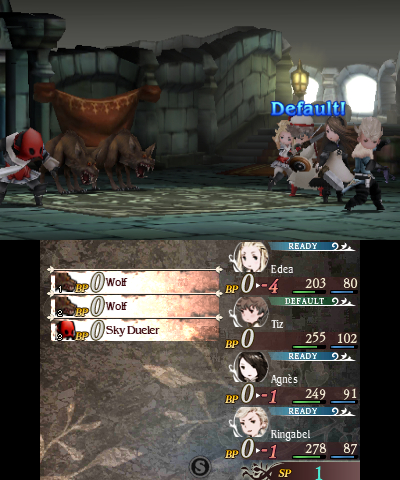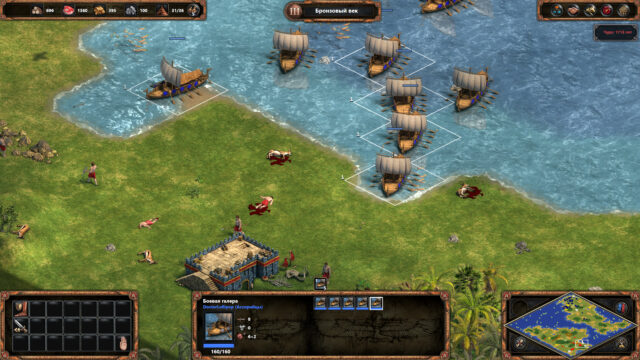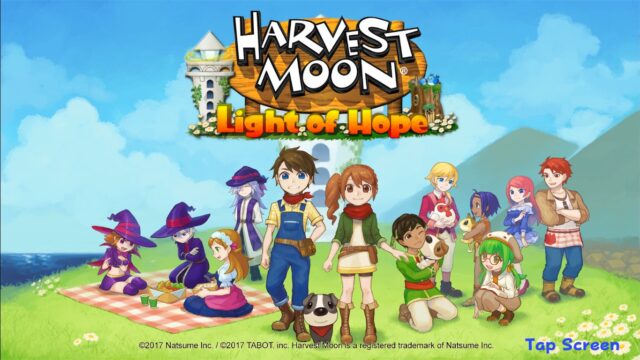Bravely Default Review
We generally don’t really like consoles, but here we make an exception, the game is very strong. Bravely Default was developed by Square Enix exclusively for the Nintendo 3DS platform.
Japanese role-playing games have been experiencing something like a creative upswing lately, despite their reputation as conservative. The triumvirate of recent titles on the Nintendo Wii – Xenoblade Chronicles, The Last Story, and Pandora’s Tower – hints that even in an established genre, there is still potential for originality and inventiveness. Especially Xenoblade – it is one of the most interesting games of recent years.
Bravely Default continues this trend. Despite the game’s development being funded by Square Enix, a company that has made a name and fortune on the Final Fantasy and Dragon Quest franchises – games that have always been created according to strict canons – Bravely Default often deviates from the classic formula. The creators have introduced new ideas in a way that will delight and surprise both genre veterans and newcomers.

In side meta-MMO missions, you go hunting for hidden treasures and experiment with abilities.
Being a pseudo-sequel to Final Fantasy: The 4 Heroes of Light, Bravely Default cleverly utilizes its separation from the Final Fantasy brand. With the freedom to not be bound by convoluted storylines, Silicon Studio (known for 3D Dot Game Heroes) boldly explores unfamiliar territories and doesn’t rely on constant stylistic references to various traditions (although there are fading crystals and creaking airships present). The character design unmistakably bears the hand of Akihito Yoshida (the artist behind Final Fantasy Tactics, Vagrant Story, and other classics), but the exquisite watercolor backgrounds, magically translated into 3D, are unlike anything else. They endow the game with a wonderful aesthetic, giving it a sense of grandeur and depth.
The story, however, doesn’t shine with originality anymore, but it doesn’t hesitate to poke fun at itself (“Mr. Amnesia” – the name of one of the characters – is a reference to the constant use of this trope in JRPGs). The protagonist, Tiz Arrior, is a 19-year-old shepherd from the village of Norende. At the beginning of the game, he witnesses his entire village suddenly collapsing into a gigantic chasm. He manages to escape and soon encounters Agnes Oblige – a mage girl with a devilish ability to navigate – pursued by the vile Eternian Sky Knights. Together, they travel through the kingdom, fighting Eternian officers who hold the keys to the most interesting new mechanics of the game. Their mission becomes to uncover why the tectonic plates have become unbalanced.

While you rebuild the village, you will be attacked by Nemeses, mysterious enemies invading through the network or via StreetPass.
The strange name of the game comes from its main – and brilliant – innovation. Battles take place in a traditional turn-based format: you choose who to attack and who to defend against, and then watch the actions of the computer opponent. But in addition to simple attacks, there are two special actions: “Brave” and “Default”.
The first action allows you to make up to four moves in one. This is risky because if you don’t defeat the enemy, you will have to patiently wait for them to make the same number of counter moves. On the other hand, “Default” is a reliable bet. Here, your character goes into defense and accumulates an additional move. For example, four consecutive “Defaults” will allow you to make four attacks on the fifth move.
This original system adds a dynamic element of risk and reward to battles. Different characters in the group can simultaneously perform opposite actions, and while one unleashes all their power on the enemies, another can wait – this way, you will distribute the battle strategy over several moves.

Many dialogues in the game are voiced, which helps to bring the plot to life, although the quality of the acting varies noticeably in some places.
The overall diversity is increased through the meta-game, largely based on the job system from Final Fantasy 5. After defeating an enemy officer (a local variant of bosses), you gain a new class that is available for any of the characters. In total, you can collect 24 professions that determine the abilities available to the characters, as well as their strengths and weaknesses. They range from standard examples from Dungeons & Dragons, such as Monk, Mage, Knight, and Thief, to more exotic ones like Vampire and Pirate. When a character gains experience points in a profession, they unlock new abilities, and these unlocked abilities can be distributed among different classes, thus creating a team of four fighters according to your preferences and favorite tactics.
Alongside the exquisite 3D stereoscopy, Bravely Default creatively utilizes other features of the 3DS. You can collect custom attacks by receiving them through StreetPass, and if you activate the sleep mode during the game, Sleep Points will accumulate (one point for every 8 hours of waiting). These points can be used to freeze time in battles, allowing you to freely attack in a single turn. Perhaps this won’t delight you too much, but there is a slight monetization aspect here – you can purchase “drinks” with these points. However, Bravely Default has a fairly flexible difficulty level and, for the most part, additional financial investments are not required. Moreover, it is possible to do without them altogether.

Despite the childlike dialogues, the game excellently manages to bring in an insinuating subtext into certain phrases.
During the game, you will need to rebuild your hometown of Tiz from scratch – this is a side mission, the mechanics of which are based on similar mobile games, but in the case of Bravely Default, fortunately, there is no monetization. Builders and workers appear through StreetPass. Every time the console detects another 3DS nearby, a new resident appears in Norende. The brilliant idea here is that the number of workers directly affects the speed of village restoration. The work that one person does in an hour, two people can do in half an hour, and ten people can do in six minutes. You need to level the ground for construction, indicate the plot, and build the required shop on it. Thus, the development of the village reflects the hero’s journey – at the beginning of the game, he lost his family, friends, and all his resources, but gradually managed to overcome this and rebuild his life.
For the most part, the innovations in Bravely Default only embellish the game, which remains true to its old traditions. Of course, the interaction between the plot and the combat components will seem very familiar. But the main innovation expands strategic possibilities, which is a very interesting approach. And despite the fact that the mystical crystals turned out to be completely useless as a driving force of the story, be prepared for the fact that sooner or later the scriptwriter, Naotaka Hayashi, will start tearing apart your plot templates. The story, which follows clear rules, will still pleasantly surprise you at times.
Square Enix had the courage to abandon the “Final Fantasy” nickname in favor of a new, unusual, and unclaimed title. But there was a weighty reason for that: beneath the recognizable external gloss of Bravely Default lies something completely different.
One of the best games for 3DS.
Share
Discuss
More Reviews





